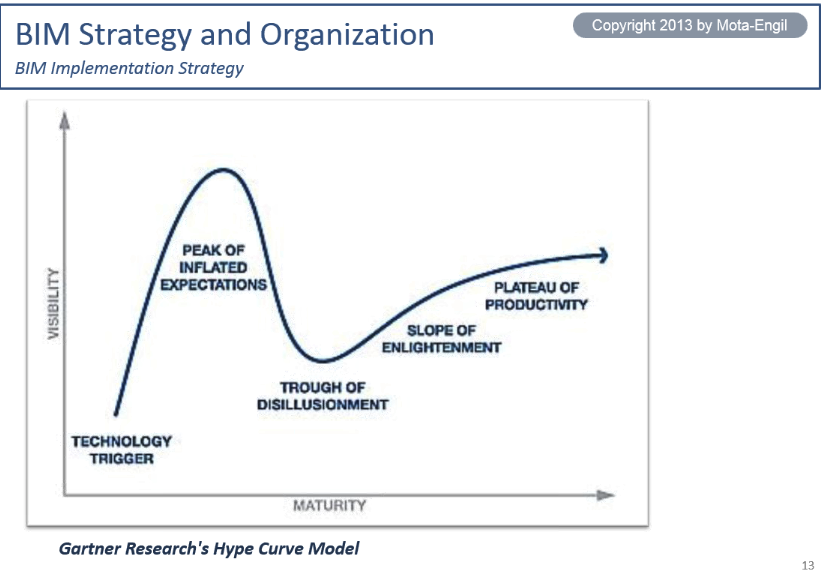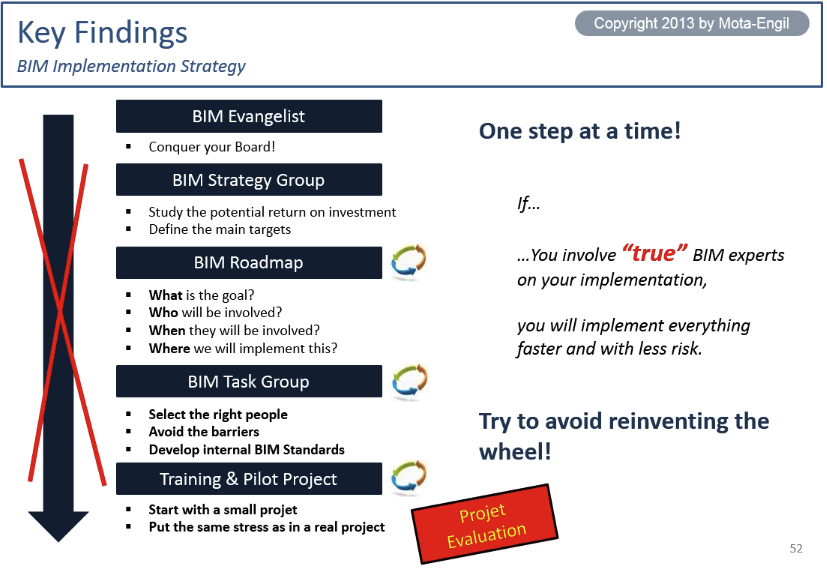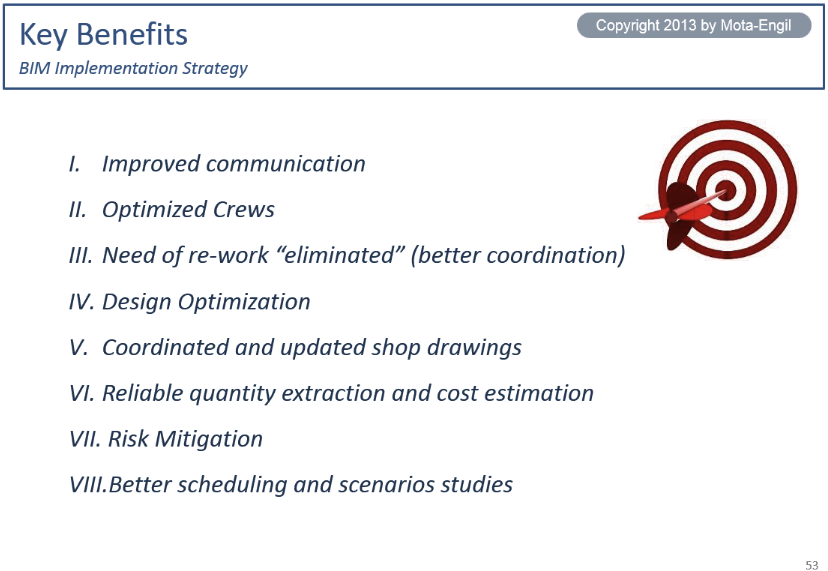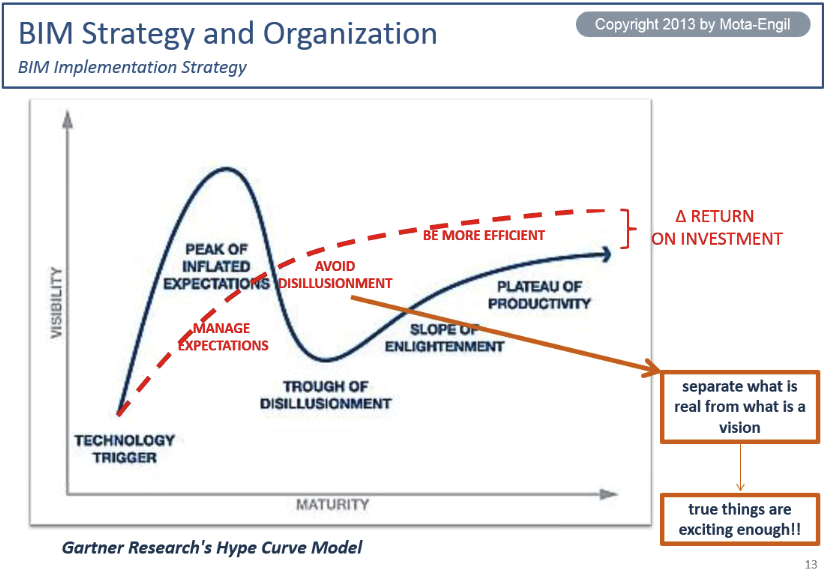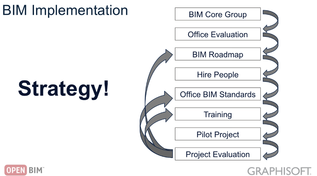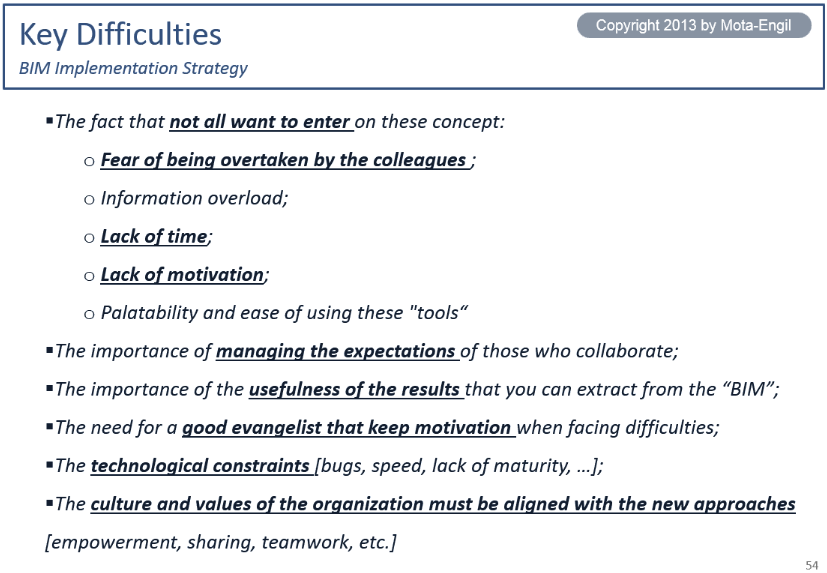 I attended a Building Information Modeling [BIM] Webinar yesterday that was sponsored by Graphisoft, developer of ArchiCad software. The main presenter was a representative of a construction firm from Portugal, Mota-Engil, who is entering their third year of using BIM and have completed over a dozen projects. I was surprised that the presentation wasn't a glowing sales spiel designed to 'sign you up'. Instead it was a no nonsense dose of reality explaining the real benefits but also the difficulty in making the changes needed to achieve them. The use of Gartner Research's Hype Curve Model (Figure #1) served to explain the root cause of the 'social' challenge BIM is facing. I think we have a way to go before we arrive on the 'slope of enlightenment'. This reminds me of the introduction of CAD in the mid-80s and the long haul to get any productivity from CAD much less enough to overcome the equipment costs and learning curves. Antonio Meireis, Mota-Engil, stressed the need to change the hype curve to the one seen in Figure #2 by managing expectations to avoid disillusionment that can be hard to recover from. Antonio spent most of his presentation sharing what Mota-Engil has learned over the past few years. Figure #3 shows a number of key steps in the implementation, but he stressed that the process is not linear because of the need to revisit the same tasks repeatedly until there is a consensus on how the firm will make use of BIM in a way that fits their culture to avoid rejection of critical aspects down the road. Graphisoft's graphic on BIM implementation strategy (Figure #4) shows similar steps. Each project undertaken becomes the basis for improvement of the process through evaluation and feedback loops. The recommendation that you form a core team of ten people was repeated several times. That gives you an idea of who they think can implement BIM - firms with more than ten people. (The majority of architects work in firms of less than ten people.) The payoff for implementing BIM is shown in Figure #5. As you can see, half of these benefits accrue to the contractor. I asked how they saw architects being compensated for taking on the additional work of using BIM to design the project. Surprisingly, the question was answered during the webinar, although vaguely: Somehow architects, perhaps through organizations like the AIA, should take the lead that being in charge of the BIM model bestows; and use this position of strength to improve the profession's standing so that architects can convince owners and contractors that the service is worth more than standard design. The final slide, Figure #6, was very surprising to see. You don't expect to be told about the downside. The English is a little rough, but bear in mind that Mota-Engil is Portuguese. I think the difficulties boil down to BIM being a major technological and social change where success can only be achieved by keeping your eye on the prize and constant cheerleading. I think we will start hearing less and less about BIM as we slide into the trough of disillusionment. Then a few years from now we will start hearing about the amazing cost savings being realized on some truly mega-projects designed and constructed by some truly mega-firms. Perhaps a generation from now we will be using BIM for everything including houses. Comments are closed.
|
x
Archives
February 2024
Categories
All
|
Architekwiki | Architect's Resource | Greater Cincinnati
© 2012-2022 Architekwiki
© 2012-2022 Architekwiki
